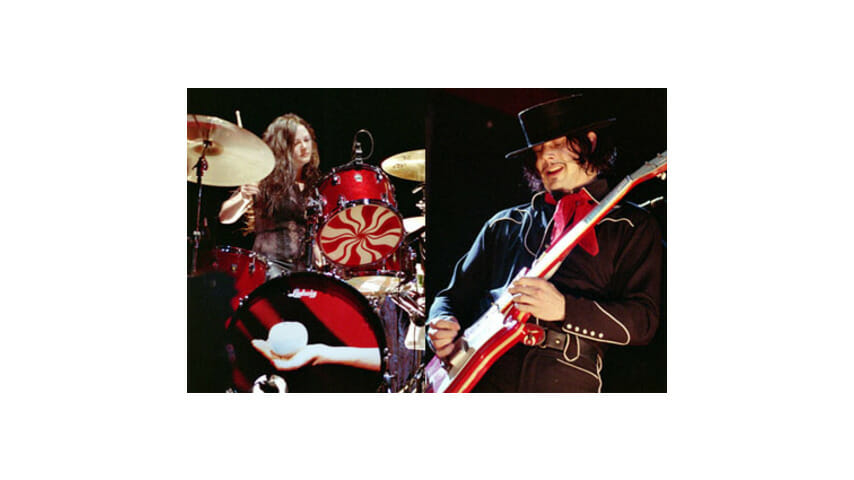The White Stripes, The Shins

(Pictured above [L-R]: The White Stripes’ Meg and Jack White. Photos by Jon Sumber.)
In the shadow of Coney Island’s iconic Parachute Drop, which hovered over the right field fence of KeySpan Park, the White Stripes—what’s the word?— rocked. Against all odds, Jack and Meg White filled the minor-league baseball stadium with a deep sense of intimacy, solving a riddle that has plagued rock bands for generations, including opening act The Shins. On record, anyway, the Albuquerque outfit is far snugger than the Stripes, and with work (and luck), will be headlining similar venues on their own in a few years. But the fragile beauty of their perfect songs like “Kissing the Lipless” and “So Says I” eluded them by the Brooklyn seaside.
What made the Stripes’ achievement so impressive was its scale. Their stage set—replete with red kettle drums, a peppermint-swirled trap kit, spray-painted white palm fronds (in white pots) and pearly white footlights—was tended to by bowler-capped/black-suited/red-tied roadies. White himself entered in a getup that resembled a cross between Slash and Zorro and, with a manic intensity, delivered the crushing hooks that already sounded like arena rock when the Stripes could barely fill bars. But it remained cozy.
-

-

-

-

-

-

-

-

-

-

-

-

-

-

-

-

-

-

-

-

-

-

-

-

-

-

-

-

-

-

-

-

-

-

-

-

-

-

-

-








































